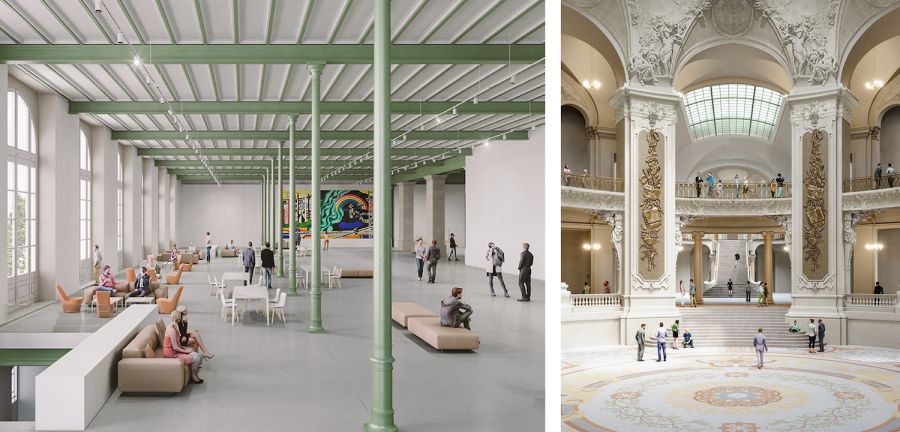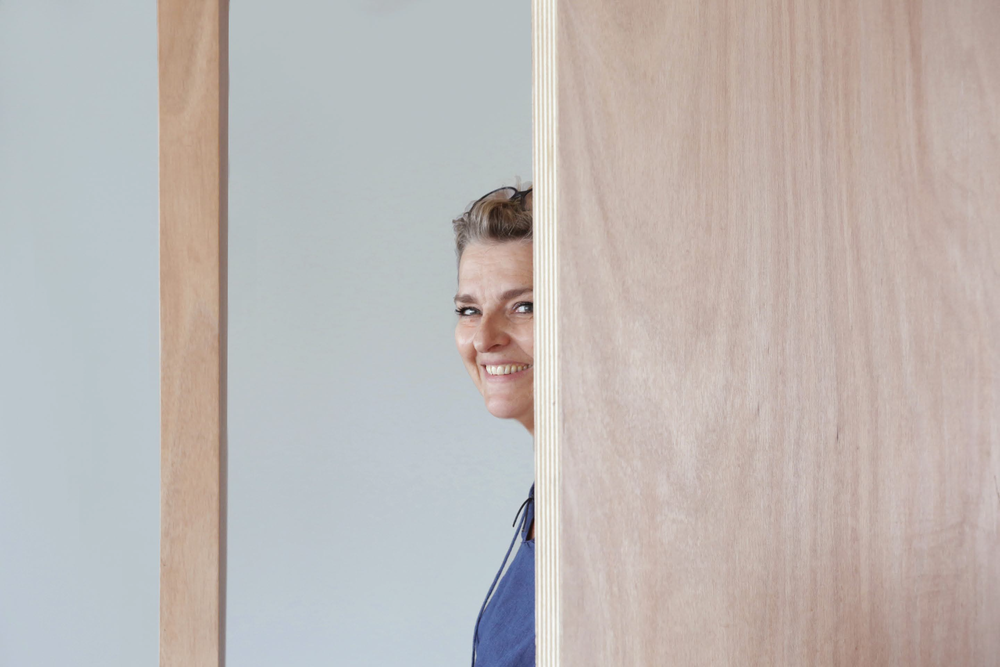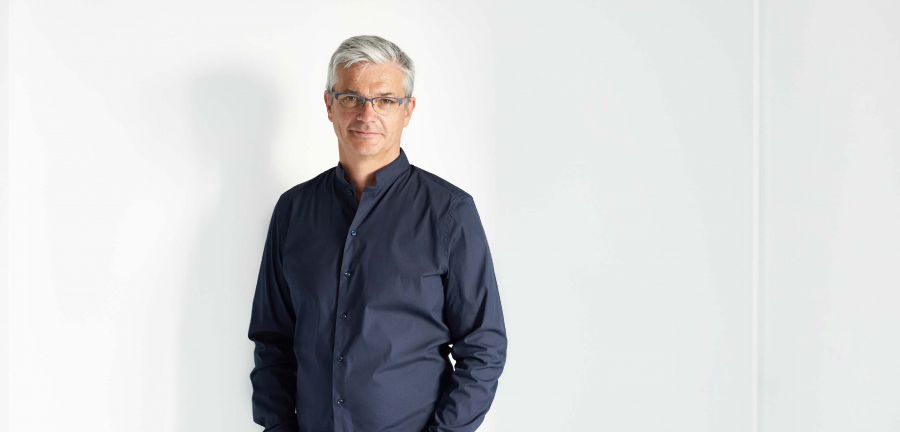
Creation is a matter of reinterpreting
Behind his relaxed composure, François Chatillon is a man torn between paradoxes: creation versus conservation, on the one hand, and heritage versus contemporary architecture, on the other. In a field that demands objectivity, and although he professes his fascination for the impartial brand of restoration practiced in Catalonia, the Chief Architect for Historical Monuments (ACMH) considers his practice a work of creation, or at least interpretation. In his words as in his work, François Chatillon displays agility. His taste for provocation sometimes sends him on a path to contradiction: though he claims to hate the word ‘heritage’, he uses it constantly – and how could he not? In many respects, his attitude betrays a desire to challenge the norms, including the most politically-charged. Despite his passionate rhetoric, his is a measured approach. The sting of doubt drives him to question every possibility in order to choose the most suited one. His professional life underwent a similar scrutiny when, at the age of 40, he threw caution to the wind and enrolled at the École de Chaillot, an experience that called into question the nature of his reflexes and eventually led him to the position of ACMH. Chatillon describes himself as a man of nuance. In the age of inflammatory tweets and authoritative stances, this ethical regimen is refreshing.
The following interview, by journalist Jean-Philippe Hugron, is taken from the special issue L'Architecture d'Aujourd'hui "Compositions", dedicated to the work of Chatillon Architectes agency. This special issue is available on our eshop.
L’Architecture d’Aujourd’hui: How would you describe your firm?
François Chatillon: First and foremost, I would say it is made of a team of incredibly talented collaborators: architects, historians and stonemasons even. Statistically, I could also say that their average age is around 30-35, and 65% of them are women. Society is changing and so is our firm. It is also a multicultural team. And this kind of melting-pot environment is not something you plan, it is part of the company’s core identity. No one comes to work with us by chance, we are all driven by our interest in – or even passion for – architectural heritage. However, in terms of recent changes we’ve made, my son Simon has initiated a transformation in recent years to help develop the firm, its projects and its image. He brings his vision of the job and demonstrates our capacity to design architecture that is current, ensuring the firm remains in step with the times. And if there is one thing that makes us special, I would say it’s the value we place on complexity, as exemplified by what we are currently doing on the coast of the Red Sea, where we have undertaken a heritage survey for the restoration of ancient villages in line with UNESCO standards for tourism development.
AA: You have had an unusual career. Why did you decide to enrol at the École de Chaillot at the age of 40?
FC: It was a day I was working on a project for a middle school… I just felt like a change! So I took a friend’s advice and enrolled at the École de Chaillot with no intention of becoming the next preacher of conservation. I’m interested in conservation, but I think it shouldn’t be gratuitous. And then when classes began, it was awful. Imagine, being 40 and realising you don’t have the same technical expertise as your classmates… For my first assignment, I got 5/20. That’s the kind of thing that gets you thinking! But my teachers took the time to get through to me. Chaillot was a time for me to question my own practice of architecture, as I made my way through an outstanding and intellectually demanding programme that pushed me to think differently about the relationship between contemporary creation and heritage sites.
AA: Being appointed ACMH soon after that, when you were already halfway through your career, we imagine it must have had quite an impact on you. How did this change affect you?
FC: As ACMH, the way I experience commission work has changed. Of course, there are still requirements, but I also have a newfound freedom to say what I want. I approach the limitations of every historical building as a tremendous opportunity to escape norms and conventional thinking. When you are working on a pre-existing building, you can’t give in to an arbitrary perspective disconnected from the architecture. You have to make do. In fact, I feel much more liberated today than when I was 30 or 40. When you have a more traditional practice of architecture, you are constantly fighting this urge that suppresses the best to avoid the worst. Today, I step into other people’s stories, works that have artistic value, objects that were polished, planned, wanted and intensely desired.
AA: Would you go so far as to say that heritage is the Eldorado of architecture?
FC: God has been replaced by heritage! The old, the ancient has become an object of sacred worship… Look at Notre-Dame de Paris Cathedral. To me, heritage is not the gold bar people imagine. It is an asset that is shared, that evolves. The more people cling to heritage, the less they believe in the future. The doctrine that everything old should be conserved is a lazy impulse. It’s just easier to keep everything. But it freezes the building into a reference to a former state. Take Le Corbusier’s flat, for instance. Should it be restored to its 1936 or 1965 condition? I always answer with provocation, saying the time of reference can only be that of the project, a collective project led by the architect as its conductor. Because it is society that projects its vision of the past on the use it expects the site to serve.
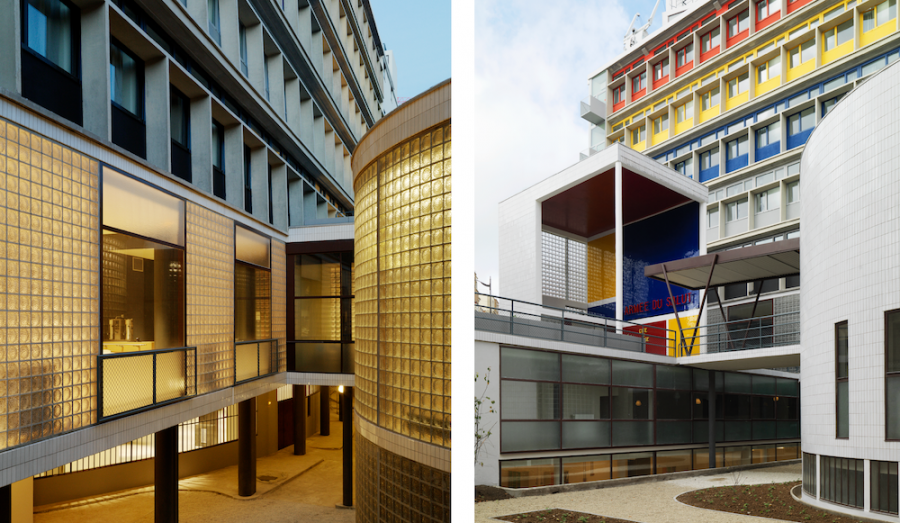
AA: How do you feel about Notre-Dame de Paris Cathedral?
FC: Like everyone else, I was very saddened by the fire. Although we should also put things in perspective: no one died. What I think was missing about the way it was handled was a debate. The instantaneity of media coverage forced us to pick sides right there and then: create something new or rebuild identically. These kinds of knee-jerk reactions make us lose sight of the essence of a project.
AA: How would you define this notion of ‘project’?
FC: Conservation is not a solitary creative statement that appears fully formed on a blank page. It is a project informed by knowledge. To achieve that, we conduct studies to find answers to simple questions: What did the architect want? How was it done? Why was it done this way? What was the person that transformed it trying to achieve? And so on. It is a way to give buildings historical value, artistic value, documentary value and usage value. Take the Maison du Peuple, in Clichy (suburban Paris), for instance. Beyond the architectural statement of Beaudouin, Lods, Bodiansky and Prouvé, there is also a social history tied to the cultural legacy of communism in the suburbs, a legacy that can’t rightly be ignored, whatever your own political affiliations. In this case, the building’s usage surpasses all other considerations. Turning it into a luxury hotel would make absolutely no sense. I would even say it would be a negation of the past. And then there are contextual values, which proscribe designing a project at odds with its built environment or overstepping your duties. That being said, my job is not to grant licences or hand out blue ribands. My job is to try and understand what is valuable and what isn’t. I also rely on technical support to help me refine every decision I make. This vision of what a project is is the exact opposite of the idiotic compulsion to think that with age comes value. I think we have been too influenced by Italy and the sacredness of materials. So I am always ready to partake in dangerous debates, and in fact my work is constantly threatened by controversy. But controversy is what births projects, stone by stone — even when it comes to heritage sites. For the Cité du Refuge my friend François Gruson and I worked on, it took endless negotiations to overcome certain dogmatic views. Conservation is not all about material considerations!
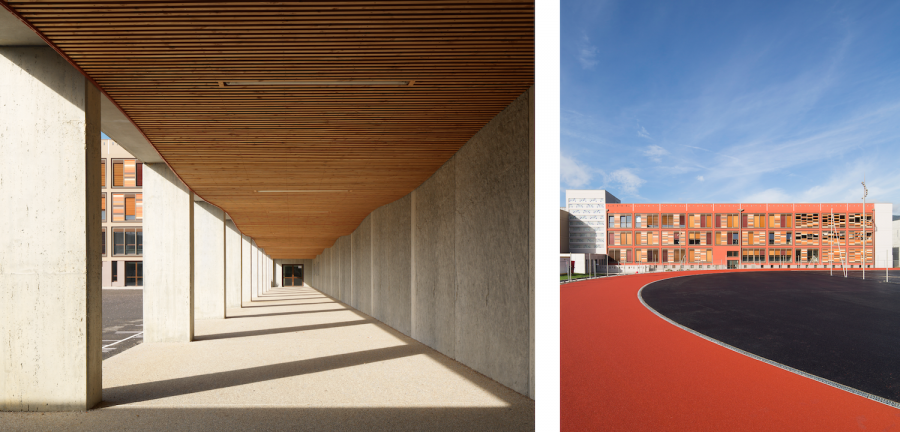
AA: What do you think about rebuilding the missing tower of the SaintDenis Basilica, the Tuileries Palace or the Château de SaintCloud?
FC: Rebuilding also means demolishing. What I’m interested in is what’s already there. Obviously I would love to rebuild Ledoux’s homes and explore them… but in 3D! Intellectually, it would be very gratifying. But in reality, I would be taking an owner’s liberty. I don’t abide by the ideal of reconstitution, and I consider my job solely in light of its continuity with the past. So to going back to the past, I say no!
AA: How did your sensibility to heritage buildings develop?
FC: I studied at ENSA Grenoble for four years before I transferred and graduated from ENSA Belleville. I never planned to stay in Paris so I went back to my native village, Ferney-Voltaire. There I established my practice, designing garages, villas, residential buildings. That’s when my wife Eva and I were invited by a friend of ours, the stage director Hervé Loichemol, to embark on an intellectual adventure about the legacy of the Enlightenment that involved creating a cultural centre inside Voltaire’s chateau, which had just recently been purchased by the state. It was the first time as an architect I found myself facing the question of heritage. Around the same time we were also contemplating the possibility of staging a contemporary production of Goldoni’s plays. In many respects, I look back at this experience as my very first class.
AA: Do you feel any connection with a specific school of thought?
FC: I feel close to Catalonia and its school of objective restoration. To me, Antoni Gonzalez and his work on the Palau Güell are representative of an objective relationship with architecture for the purpose of highlighting it. He headed the Historical Monuments department in the noughties and authored a number of books that would deserve to be translated and studied in France. My mind also inevitably goes to Victor López Cotelo’s projects, especially the Casa de las Conchas in Salamanca. His approach shows incredible finesse. And as for Carlo Scarpa, he is the ultimate master.
AA: Did anyone make a strong impression on you during your studies?
FC: Architecture studies are brutal. Students are repeatedly humiliated, but never given any key to understand their mistakes. If you don’t want to be crushed, you need to be fearless. Luckily, Nicolas Ragno and his first classes made a strong impression on me. His very first lesson was on paper, the next on pencils. It seemed out of place, and yet everything was perfectly thought out: paper grain, gluing technique, soft leads and hard leads, etc. He taught us this relationship to the physical experience of drawing, something we see in the master craftsmen of the Compagnons du Devoir. You have to know how to use the paper, learn to tame the material so you don’t have to start again, or do over. He was the one who once invited Maurice Culot to class. He had us do a survey drawing of a single window in Grenoble using a Graphos pen: it kept us busy for days, but I still remember it today. Then when I got to Paris, everyone would rush to UNO. I stayed there a couple of weeks. I couldn’t take it any longer. Then I met Daniel Bernstein, the co-author of La Maçonnerie sans fard (Masonry without makeup), a book that remains a reference for me even today, and he initiated us into the details of architecture.
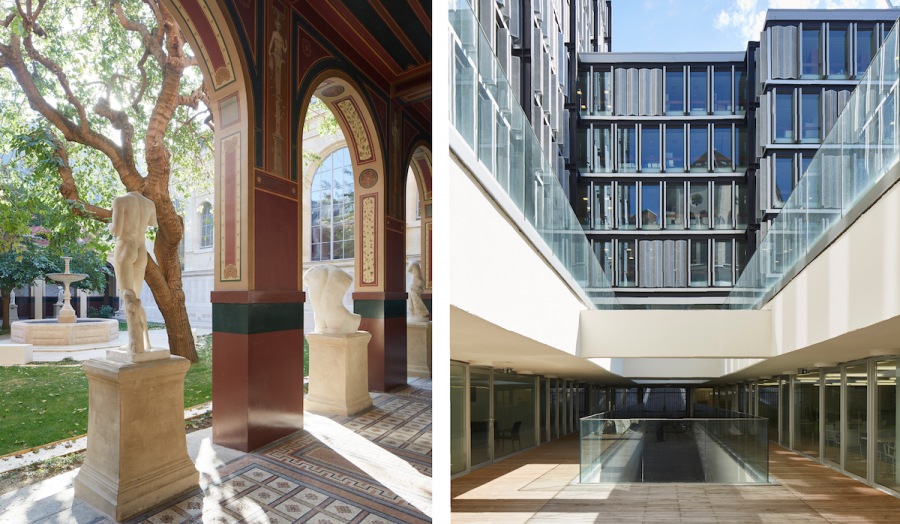
AA: What do you think about teaching today?
FC: Every architecture school should be modelled on Chaillot! Intellectual debates on objects, their significance, their value, are not encouraged in other schools as they are at Chaillot. Architecture is a cross-disciplinary practice and, in many respects, the teaching underemphasises curiosity. Students shouldn’t spend hours on end sitting alone behind a screen that mediates architecture, they should be spending their time with the craftsmen of the Compagnons du Devoir. For instance, stereotomy is a mental exercise of descriptive geometry that heightens your awareness of space. How often do software programmes fail to solve a problem, while stone fitters can imagine anything? Le Corbusier possessed this knowledge of stone, his sketch pads were filled with stereotomy drawings. Buildings from the 1960s and 1970s still exhibit this finesse in their design. Henry Bernard and Bernard Zehrfuss had received this dual education: classical –Beaux-Arts, some will jeer– and modern.
AA: How does the digital revolution apply to the concept of heritage in your work?
FC: I admire the work of the Compagnons du Devoir of course, but I have also always been interested in the possibilities offered by new technologies. I started drawing 3D models on a Hewlett Packard in 1993. And today, all the images for our projects and all our BIMs are done in-house. I see this as a way to stay in control of our work. Digital tools provide an efficient solution when we are working on surveys and assessments. They help us identify aspects we don’t understand or have doubts about, often because the structure is difficult to access. It is a way for us to define these higher-risk areas. Our method is simple: we start with archive plans and overlay point clouds obtained with our 3D laser scanner, and then we look at the survey plans. If the cloud matches the archives, these become our reference. If because of ground settlement or subsequent work the cloud is closer to the survey plans, then we use those as our reference. This approach that we call digital heritage assessment requires a lot of work, but it pays off in the end. The BIM is valuable in helping us understand the building, but also to inform our intervention.
AA : The recent evolutions in project management have seen clients keeping architects off work sites and giving them only limited tasks. Can an ACMH face the same kind of situation?
FC : Architects are abandoning work sites. In the past, architects used to hire contractors. Now it’s the other way around. To me, this is the root of the problem. In my mind, the architect works on two separate planes: the intellectual plane with the client, and the material plane with the contractor. But heritage sites require an approach that is much more involved. To ensure our control over the construction process, we produce drawings of many details, much like our Swiss neighbours do. It’s a question of legitimacy. And for liability reasons, we also absolutely need to learn a bit about the law. These are necessary conditions to retain the power we need to lead a project.
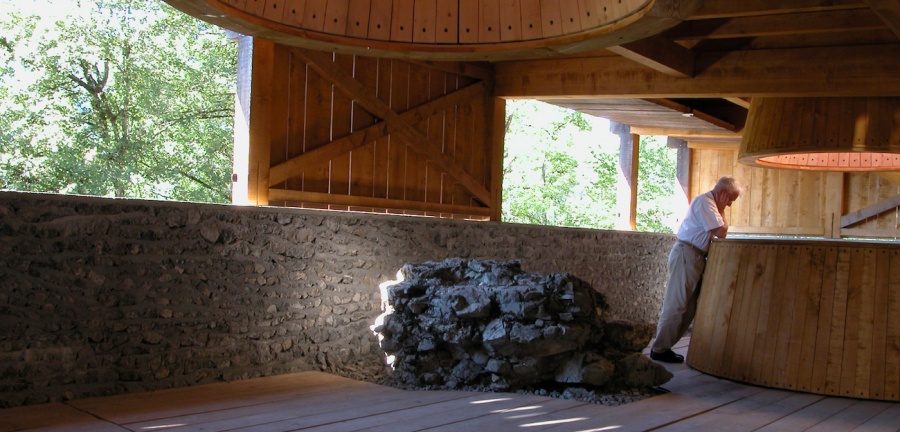
AA: What is the role of an ACMH on today’s architecture scene?
FC: Being an ACMH, project leaders too often relegate me outside the realm of contemporary creation and try to engage in power plays – 9 times out of 10 with counter- productive results. Because of my training and my culture, whenever I approach a historical building, I know that I know nothing, that I have everything to learn from it and that the project will emerge as a result of this process. Unfortunately, many French architects have received training that prevents them from walking that path of humility and pushes them to drain the building of its substance so they can materialise their thirst for recognition inside it. The decision I’ve made is to search for the substance of others, this is what Chaillot and the theatre have taught me.
AA: Before we conclude, how could we not mention the Grand Palais? What would you like to say about it?
FC: I believe that the times are no longer about grand architectural gestures, especially when it comes to an already extraordinary building like the Grand Palais. We must find the path to sobriety without giving up artistic and cultural ambitions. This situation puts into perspective both contemporary creation and the conservation of historical monuments, and the crises we are going through are rushing it. I hope that our project for the Grand Palais will demonstrate the modernity of this approach.
AA: Any last comment?
FC: As an architect concerned with the world as it is passed down to us and my relationship with the past, I like to find inspiration in the theatre and music, more specifically Italian opera, a form of sung theatre to which my friend Leonardo García Alarcón has made such a wonderful contribution, but which often consists of very few elements: a text, a melodic line, a mathematical basis, measures devoid of improvisation. Everything else is a work of interpretation… But from a broader perspective, my last comment would be that there is no end. The end of a life is not the end of the world. I completely agree with the philosopher Emanuele Coccia’s vision that places an individual’s life and actions in a continuum with what was and what will be. I am wary of those that claim to know the truth, fanatics of all sorts, prophets heralding the end of time. I prefer to look at the world with the amused optimism of a Voltairian who loves to cultivate his own garden.
